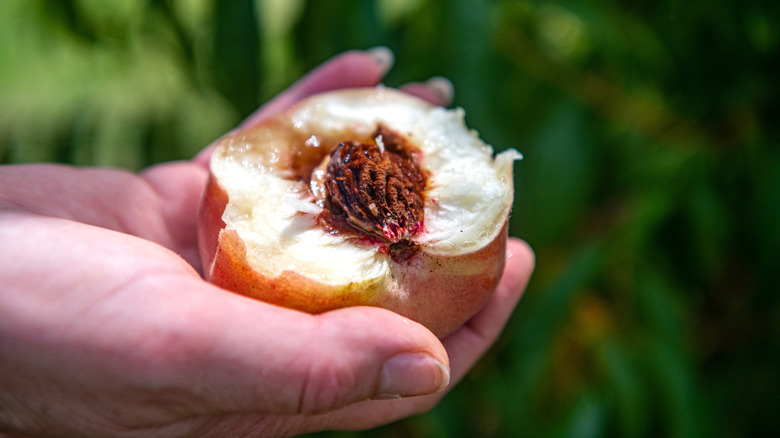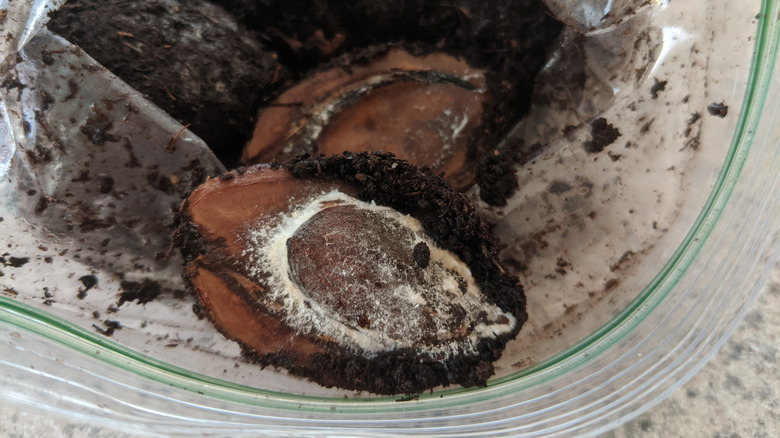Think Twice Before Trying To Grow A Peach Tree From A Pit
Fresh fruit from a peach tree (Prunus persica) is a true summertime treat. You can grow a peach tree in your yard, or even on your patio, in USDA hardiness zones 4 through 9. If you want to grow a specific variety of peach, buying a grafted tree is the way to go. That's because you know exactly what type of peach it will produce. If you eat a peach and then plant the seed encased in its pit, the tree that results may make fruit that looks or tastes a bit different. Growing a flourishing peach tree from a humble seed takes a few years, so it's important that your effort and patience pay off.
Genetics explains why the seeds become trees that make slightly different peaches than those they once called home. Peach seeds result from two parent trees, one of which has pollinated the other. Each seed has genes from both parents, much like human offspring do. However, the peach that houses the seed only has the attributes of the mother tree. This is even true for self-pollinating trees, which have male and female reproductive parts. Their seeds contain genetic material from a slew of ancestors, some of which produced fruit with different traits. Therefore, the trees that grow from their seeds may take after their great grandparents or other distant relatives.
There are many delicious peach cultivars, so you're likely to get something tasty if you grow a tree from a pit, but there's always the risk of genetic oddities. Your new tree might even grow nectarines, which are peaches with a recessive gene that tells them not to grow fuzz.
Other challenges of growing peaches from seeds
There are some other obstacles that can derail your efforts to grow a peach tree from a pit. In general, fruit tree seeds need to experience a chilling period to germinate. If they don't stay cold for the right amount of time, you won't get a tree. Peach pits must chill for about 100 days at a temperature between 32 and 45 degrees Fahrenheit. They also have to stay moist for the duration of this chilling period. Sometimes pits will grow mold when you attempt to keep them damp for months at a time. When this happens, they're unlikely to sprout.
Pits from grocery store peaches are especially challenging for growing trees. That's because they're likely to be underdeveloped. If this is the case, they usually won't germinate. Plus, the peaches at your local supermarket may not be a good fit for the growing zone you call home. A store in Minnesota may carry Georgia peaches descended from a long line of trees that detest the frosty weather northern states experience. Only cold-hardy peaches — cultivars such as 'Contender' and 'Reliance' — will thrive in zone 4, which covers a large swath of the northern United States.
Additionally, you may need to remove a peach seed from its pit to encourage it to germinate. This involves splitting the pit open with a hammer or nutcracker. It's doable, but not as simple as buying a fast-growing fruit tree at a nursery.

